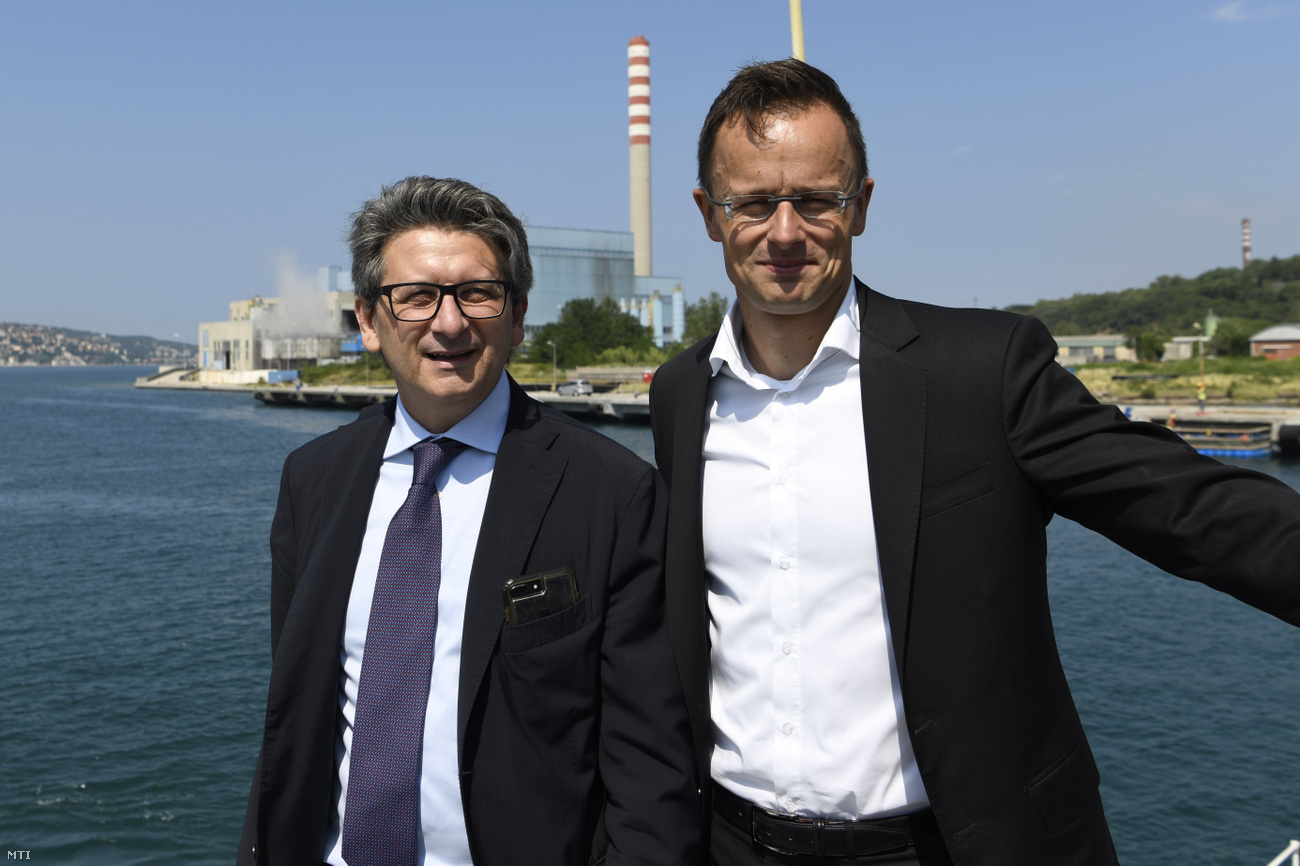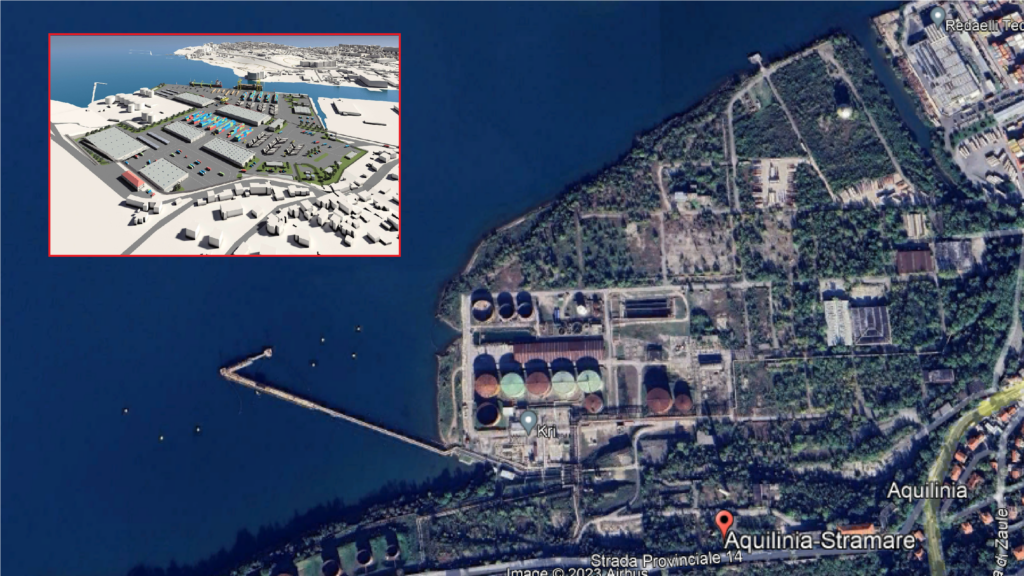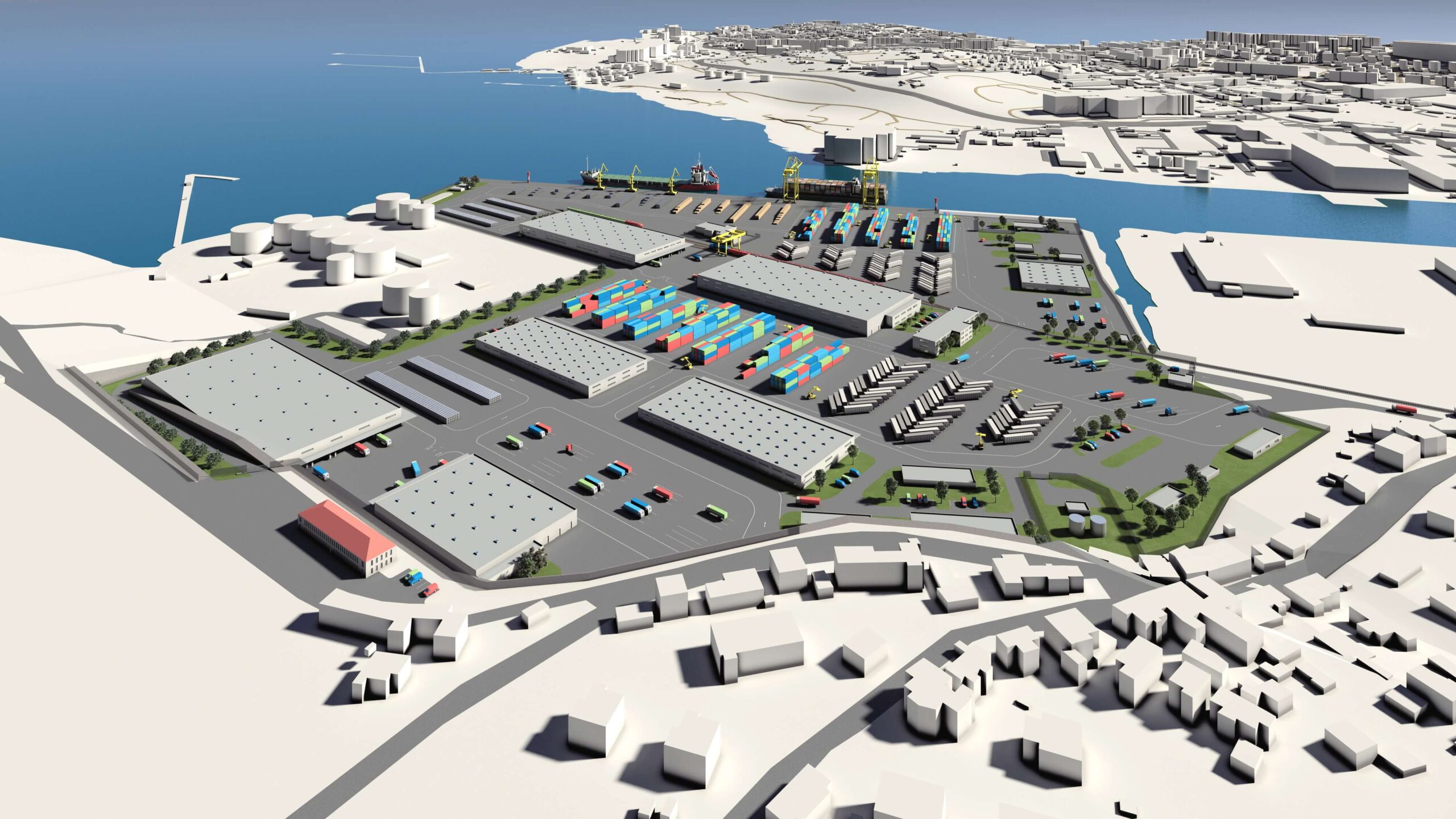The https://english.atlatszo.hu use cookies to track and profile customers such as action tags and pixel tracking on our website to assist our marketing. On our website we use technical, analytical, marketing and preference cookies. These are necessary for our site to work properly and to give us inforamation about how our site is used. See Cookies Policy
No ship has docked in the Hungarian port of Trieste, yet it swallows public money
At the end of 2020, the Hungarian government bought land and operating rights on the coast of the Italian city for around HUF 10 billion (EUR 25 million). Nothing happened in the area until now, but the state company set up for the project is burning public money since 2019. The government calls the property a port, but it is in fact a former oil refinery that they intend to turn into a cargo port for container ships at a cost of further HUF 65 billion (EUR 162.5 million). However, the feasibility study was only ordered after the purchase of the industrial land, and although it cost 160 million forints (EUR 400,000) in public money, they do not want to make it public.
Hungarian Foreign Minister Péter Szijjártó and then Italian Interior Minister Matteo Salvini announced in early July 2019 that Hungary would establish a port and logistics base in the Italian city of Trieste, which is less than a six-hour drive from Budapest. The deal finally closed well after the official announcement, at the end of 2020. The Hungarian state bought the Italian company Aquila S.r.l., which held part of the land and the port concession until 2074. The other part of the area was bought from another company, and the total business cost around HUF 10 billion (EUR 25 million).

According to the official announcement in 2019, the Hungarian government has “purchased a 32-hectare plot with a 300-metre stretch of shoreline in the port of Trieste for 31 million euros within the framework of a 60-year concession agreement”. MFA Péter Szijjártó also said then that “We are also planning 100 million euros of infrastructure investment in the customs free port to enable Hungarian enterprises to manage their export activities from here, which are expected to be some two million tons, or 78 thousand containers a year”.

Massimiliano Fedriga, president of the Friuli-Venezia Giulia autonomous region, Matteo Salvini, the then Italian Interior Minister, Péter Szijjártó Hungarian MFA and Zeno D’ Agostino, CEO of the Port of Trieste at the press conference held after the signing of the concession contract on the establishment of the Hungarian cargo port in Trieste on 5 July 2019 (credit: MTI/FM/Burger Zsolt)
The land purchased by the Hungarian government is not a part of the harbor of Trieste, but it is located southeast of the large port, 8-10 kilometers away from that, on the edge of a bay. The water here is only 13 meters deep, which means that even a larger yacht could not use it now. After the announcement HVG reported that an oil refinery used to operate in the area, which left significant pollution behind. In addition, there is neither a port nor a logistics center there, so there will be plenty to spend the 100 million euros announced by Szijjártó for development.
In the fall of 2022, an Italian newspaper, the Trieste News published that the Hungarian port will be developed for a total cost of 200 million euros. The Italians will only pay 45 million euros of the amount (from the Recovery Fund received from the European Union), so the remaining 155 million euros (approx. HUF 64.8 billion) will presumably be covered by the Hungarian government.

The large port of Trieste above and the purchased area in a red frame below (source: vesselfinder.com)
Study ordered after purchase, but kept secret
It seems that before purchasing the area in Trieste, the Hungarian government did not think about exactly what they would do with the abandoned oil refinery, how it would become a cargo port, and how much (public) money it would cost to remediate and develop the abandoned industrial land.
Only after the purchase, in January 2021, a public procurement for the feasibility study of the port of Trieste was filed. PricewaterhouseCoopers Magyarország Kft. (PwC) won the tender in May 2021 out of seven bidders with a net bid of 445,000 euros (160.2 million forints at the exchange rate at the time).
PwC was tasked to present “a technically feasible and commercially viable development plan and business model”, almost two years after Szijjártó and Salvini announced the deal.
At the beginning of August 2023, we filed a public data request to the state owned company established for the project, and requested the feasibility study. The project firm called Adria Port Zrt. refused to release the document in its response, citing that
“the feasibility study in question is classified as decision-making data and a business secret”.
This is quite strange in the light of the fact that the government’s decisions regarding the Trieste acquisition have obviously already been made, since the industrial estate was purchased almost 3 years ago, and also the preparations for the development has begun.
In the middle of July this year, the Italian newspaper Adria Ports reported that the Trieste port authority approved the technical and economic feasibility plans for the wharfing of the terminal owned by the Hungarian state. At the same time, the evaluation of tender works has also begun, and it may be decided in the near future who will be entrusted with the construction work.
For this reason, we think the denial of the data request and the concealment of the feasibility study is not justified, so we complained to the National Authority for Data Protection and Freedom of Information (NAIH).
Expensive cars and offices
The state-owned project company Adria Port Zrt. was established in November 2019, and it is supervised by the Ministry of Foreign Affairs. The company is massively lossmaking since its start. Until now, it has made a total of HUF 1.1 billion (EUR 2,75 million) minus. Of course, this is not surprising in light of the fact that in recent years they spent many times their income on office rent alone.
Since October 2020, the company’s headquarters are in Budapest II. district, in an office building. They also have an office in Trieste – since January 2020, even though the coastal area was only bought at the end of 2020. In that year and 2022, they bought office furniture for several million forints, and since last year they are renting cars for 1 million forints (2,500 euros) a month.

Zeno D’Agostino, CEO of the Port of Trieste and MFA Péter Szijjártó in the area on 5 July 2019 (Source: MTI/FM/Mitko Sztojcsev)
The company has more and more employees: in 2019 there was only 1 person (the CEO), then 3, later 7, and last year there were 9 employees in total. The CEO’s monthly salary is approximately HUF 2 million (EUR 5,000) and the company pays several consultants too for an unknown amount.
Written and translated by Katalin Erdélyi. The original, Hungarian version of this story can be found here and here and here.
Cover pic: The area in Trieste on the January 2023 satellite image and visual plan (source: Google/Adria Port Zrt.)



